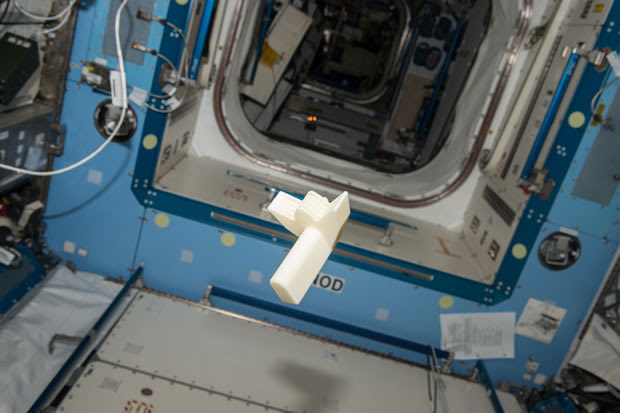May 4, 2017 – Mouser Electronics Inc. and Grant Imahara today released official footage of the winning design of the International Space Station (I.S.S.) Design Challenge being 3D-printed in space. The winning design, a femtosatellite launcher, is now in orbit and available for astronauts to launch femtosatellites in zero gravity. To watch the exclusive video, go to https://www.youtube.com/watch?
 The latest video episode of Mouser Electronics’ Empowering Innovation Together™ program highlights the official 3D-printing of engineer Andy Filo’s winning design and explains how astronauts may use the device in space. Femtosatellites are tiny satellites (about the size of a postage stamp) that weigh less than 100 grams. Scientists can use femtosatellites in many different missions and applications, including monitoring disasters, cosmic rays and coronal events.
The latest video episode of Mouser Electronics’ Empowering Innovation Together™ program highlights the official 3D-printing of engineer Andy Filo’s winning design and explains how astronauts may use the device in space. Femtosatellites are tiny satellites (about the size of a postage stamp) that weigh less than 100 grams. Scientists can use femtosatellites in many different missions and applications, including monitoring disasters, cosmic rays and coronal events.
“Mouser brought together engineers, students and makers from around the world in this exciting design challenge. All the designs were excellent, but in the end there was one design that stood above the rest,” said Glenn Smith, President and CEO of Mouser Electronics. “The heart of this challenge was ‘innovation,’ and Andy’s femtosatellite-launching device embodies forward-thinking design.”
 The winning design of Mouser Electronics’ International Space Station (I.S.S.) Design Challenge has been 3D‐printed aboard the I.S.S. Engineer Andy Filo designed the device, which allows astronauts to launch femtosatellites in zero gravity.
The winning design of Mouser Electronics’ International Space Station (I.S.S.) Design Challenge has been 3D‐printed aboard the I.S.S. Engineer Andy Filo designed the device, which allows astronauts to launch femtosatellites in zero gravity.Filo’s femtosatellite project was chosen from 242 entries, and then digitally transmitted to the I.S.S., where it was 3D–printed on April 3 by Made In Space’s Additive Manufacturing Facility (AMF) — the first commercially available off–world manufacturing service. Made In Space and Filo made some last–minute modifications after I.S.S. received the original design, rounding the handle to increase usability and comfort and further editing the design to increase printing speed.
A previous video features celebrity engineer Grant Imahara and Andy Filo as the two visit the Made In Space 3D–Printing Lab at NASA’s Ames Research Center. The video provides a detailed overview of the winning design, as well as the second– and third–place projects.
The I.S.S. Design Challenge is one of several innovative series in the Empowering Innovation Together program, which features the Innovation Lab for new projects ranging from bringing superhero technology to life to 3D printing a semi-autonomous car with drone technology.
Mouser’s valued suppliers Amphenol and Intel® were co-sponsors of the I.S.S. Design Challenge. Mouser also partnered with the Institute of Electrical and Electronics Engineers (IEEE), Made In Space, and MacroFab.
About Mouser Electronics
Mouser Electronics, a subsidiary of TTI, Inc., is part of Warren Buffett’s Berkshire Hathaway family of companies. Mouser is an award-winning, authorized semiconductor and electronic component distributor focused on rapid New Product Introductions from its manufacturing partners for electronic design engineers and buyers. Mouser.com features more than 4 million products from more than 600 manufacturers. The global distributor’s website offers multiple languages and currencies, providing designers worldwide with the newest data on the components now available for the next generation of electronic devices. Mouser ships globally to over 550,000 customers in 170 countries from its 750,000 sq. ft. state-of-the-art facility south of Dallas, Texas. For more information, visit www.mouser.com.
About Grant Imahara
Well known in the engineering community, Grant Imahara has paired his engineering expertise with a Hollywood TV and film career. In addition to his roles on MythBusters and BattleBots, Imahara is the inventor behind many famous robotic characters, including the Star Wars prequel-era R2-D2, talking robot sidekick Geoff Peterson from The Late Late Show with Craig Ferguson, and the rhythmic arms on the modern-day Energizer Bunny.






